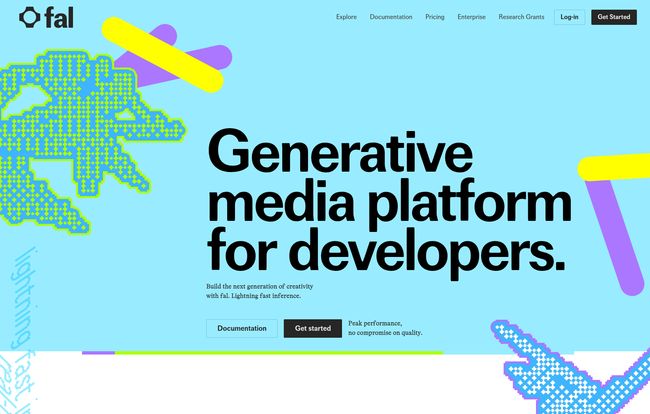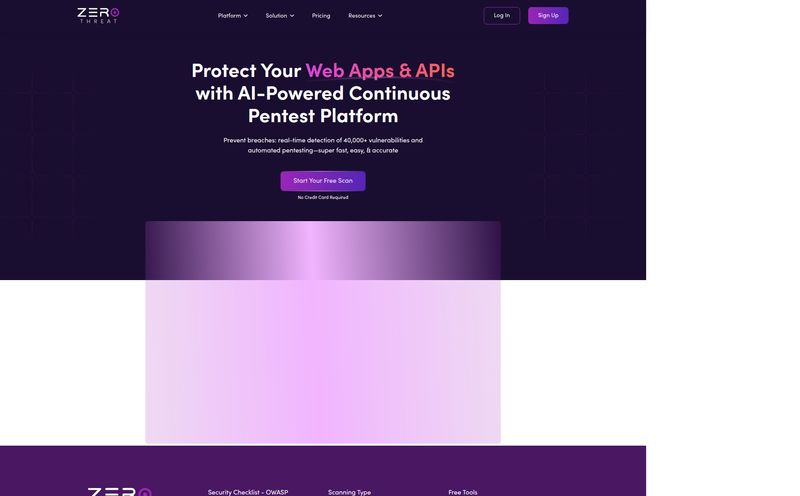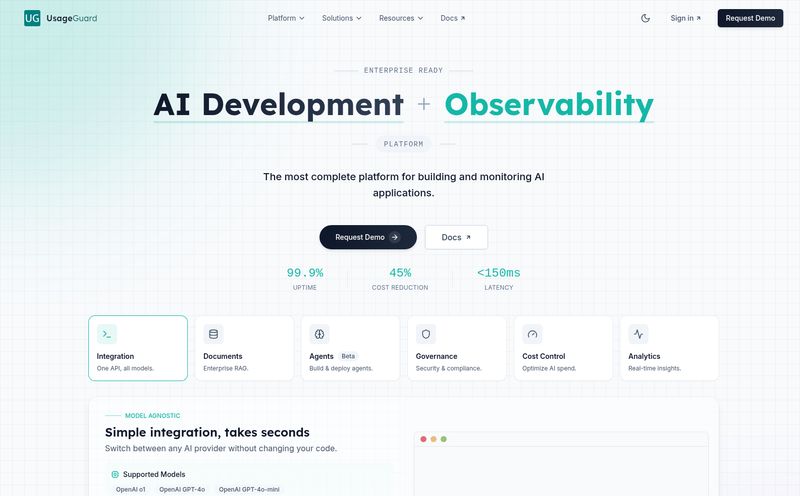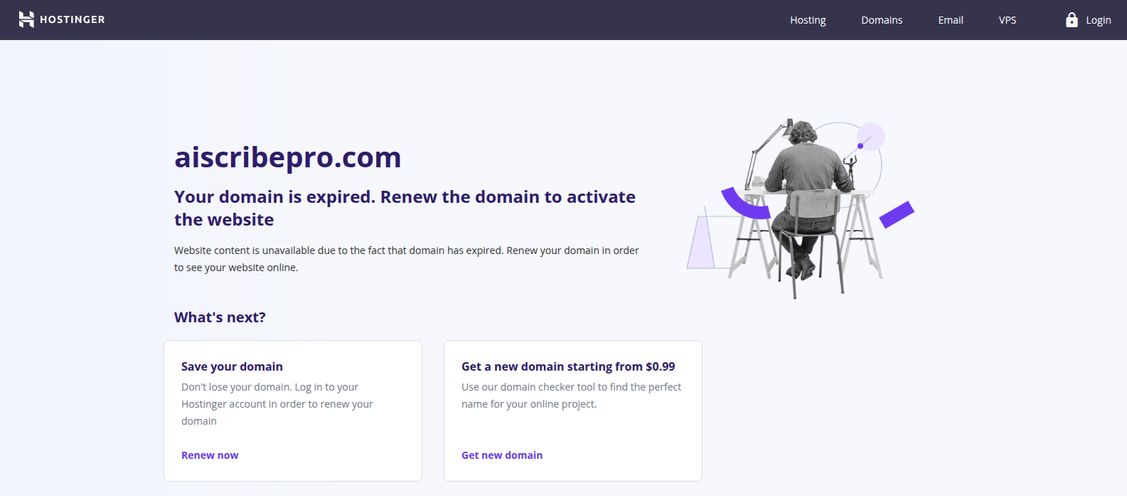I swear, if I have to watch one more spinning loading icon while a diffusion model thinks about creating a slightly-off-looking cat, I might just go back to coding simple CRUD apps. We've all been there, right? You've got this brilliant idea for an AI-powered feature, you’ve duct-taped some APIs together, and the proof-of-concept… kinda… works. But it’s slow. Painfully, soul-crushingly slow.
The user experience is shot, your iteration cycle feels like molasses in winter, and your cloud bill is starting to look like a phone number. For years, the trade-off has been stark: you can have powerful generative models, or you can have speed, but rarely both without selling a kidney to afford a server farm.
That's the landscape where a platform like fal.ai walks in. It’s not just another pretty face in the ever-growing crowd of AI startups. It’s making a very specific, very bold promise: to be the fastest way for developers to run diffusion models. And as someone who's spent more time than I'd like to admit optimizing model performance, that got my attention. Immediately.
So, What's the Big Deal with Fal.ai?
At its heart, fal.ai is a generative media platform built for people like us—the developers. This isn't a point-and-click image generator for your grandma (not that there's anything wrong with those!). This is infrastructure. It's the plumbing, the engine room, the high-octane fuel for your own AI applications.
Their secret sauce appears to be something they call the fal Inference Engine™. While they keep the exact details under wraps, the claim is that it's a highly optimized stack designed specifically for the kind of math that makes diffusion models tick. Think of it like a custom-built race car engine versus a standard sedan engine. Both will get you down the road, but one is designed from the ground up for blistering performance. Fal.ai is betting that for generative AI, that performance is everything.

Visit fal.ai
It provides ready-to-use APIs for inference (running the models) and training, taking the headache out of server management, dependency hell, and scaling. You just call their endpoint, and they handle the rest. Sounds simple, but anyone who has tried to deploy these things at scale knows it’s anything but.
Why Speed Is More Than a Bragging Right
Let's be real. “Fast” is a great marketing buzzword, but why does it actually matter? In my experience, inference speed is the line between a cool tech demo and a viable product.
- User Experience: Nobody wants to wait 30 seconds for a profile picture to generate. In a world of instant gratification, latency kills conversion and retention.
- Cost Efficiency: The faster a model runs, the less time you're paying for the expensive GPU it's sitting on. Seconds saved add up to thousands of dollars over time.
- Creative Velocity: For developers and artists, speed means you can experiment more. You can tweak a prompt 20 times in a few minutes, not a few hours. This is how breakthroughs happen.
Fal.ai seems to get this. They're not just selling access to models; they're selling the removal of friction.
A Look Under the Hood at Fal.ai's Features
Okay, so it's fast. But what can you actually do with it? The platform seems to be built around a few core pillars that cater directly to developers building modern AI apps.
A Buffet of High-Quality Models
They aren't just hosting a dusty old version of Stable Diffusion 1.5. A quick look at their offerings shows they’re on top of the latest trends. We’re talking about powerful stuff like Flux.1, Stable Diffusion 3, and even video models like Kling 2 and AnimateLCM. Having access to these cutting-edge models through a single, unified API is a huge time-saver. No more building a new integration for every new model that drops on Hugging Face.
Fine-Tune Your Vision with LoRA
This is a big one. One-size-fits-all models are great, but the real magic is in customization. Fal.ai offers LoRA (Low-Rank Adaptation) training, which is a super-efficient way to fine-tune a model on your own data. Want to create images in a consistent brand style? Or generate photos of a specific product? LoRA is how you do it without the insane cost of training a model from scratch.
They even boldly claim to have the "Best LoRA Trainer in the Industry for Flux," which is a pretty confident statement. It shows their focus isn't just on running models, but on helping developers create unique, proprietary AI experiences.
An Experience Built by Developers, for Developers
Everything about fal.ai screams "we know you write code." They offer clean client libraries for popular languages, and the example code snippet they show is beautifully simple:
import fal from "fal.ai"
const result = await fal.subscribe("fal-ai/flux-1-schnell", {
input: {
prompt: "A cinematic photo of a corgi wearing a top hat",
},
});That’s it. That’s the code. Compared to setting up your own CUDA drivers, Python environments, and model weights, this is a dream. The developer experience is top notch, its one of the things that really stands out.
Let's Talk About the Money: Fal.ai's Pricing
This is where things get really interesting, and frankly, quite smart. Fal.ai offers two distinct pricing models, catering to different needs. This isn’t a one-price-fits-all solution, and I appreciate the flexibility.
GPU Pricing: For the Power Users
If you need raw, unadulterated power and want to manage your own environment, you can rent GPU time directly. They offer a range of hardware from the mighty H100 to the A100. Pricing is by the second, which is a fantastic model for bursty workloads. You only pay for what you use, down to the second. This is ideal for teams with very specific needs or those running complex, custom inference scripts.
Output-Based Pricing: Predictable and Ingenious
For most developers, this is the main event. Instead of paying for GPU time, you pay per output. For image models, this is often priced per megapixel. For video models, it's per second of generated video.
This is a paradigm shift. It makes your costs incredibly predictable. If you know you're generating a 1-megapixel image, you know exactly how much it will cost, regardless of whether it takes 0.5 seconds or 0.8 seconds to run. It's like paying for postage by the weight of the letter instead of renting the entire post office for an hour. This completely de-risks the speed variable for your budget.
Here's a quick look at some examples from their site:
| Model | Unit | Price per Unit | Example Output |
|---|---|---|---|
| FLUX.1 [dev] | megapixel | $0.025 | 40 megapixels |
| Stable Diffusion 3 - Medium | image | $0.035 | 29 images |
| Kling 2 Master Video | video second | $0.28 | 1 video seconds |
Note: Prices are based on the provided images and are subject to change. Always check the official fal.ai pricing page for the latest details.
So, Who is Fal.ai For?
After digging in, a clear picture of the ideal fal.ai user emerges. It's not for the casual hobbyist playing with a Discord bot. It's for:
- Startups and Indie Hackers building the next killer generative AI application who need to move fast and scale without a dedicated MLOps team.
- Established Companies that want to integrate AI features into their existing products without the massive overhead of building their own inference infrastructure.
- Creative Agencies and Developers who need to fine-tune models for specific artistic styles or brand identities using LoRA.
If you're comfortable writing a few lines of code and your biggest bottleneck is model speed and deployment complexity, fal.ai should be very high on your list of tools to check out.
The Good, The Bad, and The Code-y
No tool is perfect, of course. While I'm genuinely impressed, it's important to have a balanced view.
What I find really compelling is the laser focus on speed and developer experience. They identified a massive pain point and built a solution squarely aimed at it. The output-based pricing is also a huge plus for budget predictability. On the other hand, the pricing, while flexible, could be a bit to wrap your head around at first. You'll need to do some math to compare the cost of renting a GPU versus paying per output for your specific use case. It also assumes a certain level of technical ability; you need to be able to work with APIs.
Final Thoughts on Fal.ai
Fal.ai feels like a grown-up tool for a rapidly maturing industry. The age of clunky, slow AI demos is ending. The future is interactive, responsive, and seamlessly integrated AI. To get there, we need infrastructure that can keep up. Fal.ai is making a strong case that they are that infrastructure.
If you’re a developer who has felt the sting of slow inference times, I think you owe it to yourself to give their platform a look. It might just be the thing that turns your brilliant, but slow, idea into a brilliant, successful product.
Frequently Asked Questions
- What is fal.ai mainly used for?
- Fal.ai is primarily used by developers to run and train generative AI models, particularly diffusion models for images and video. It's an infrastructure platform focused on providing fast, scalable, and easy-to-use APIs.
- Is fal.ai a good choice for beginners?
- If you're a beginner developer, yes! The APIs are very straightforward. If you're a complete beginner with no coding experience, a no-code tool might be a better starting point. Fal.ai is designed for people who write code.
- How does fal.ai's pricing actually work?
- They have two main models. You can either rent raw GPU power by the second (GPU Pricing), or you can use their optimized models and pay per result, like per megapixel for an image or per second for a video (Output-Based Pricing).
- Can I train my own custom models on fal.ai?
- Yes, absolutely. They specifically highlight their support for LoRA fine-tuning, which allows you to efficiently train models on your own custom data to achieve a specific style or concept.
- What makes fal.ai faster than running a model myself?
- Their core advantage is the proprietary "fal Inference Engine™". It's a software and hardware stack that has been obsessively optimized for running diffusion models, leading to significant speed improvements over standard setups.



